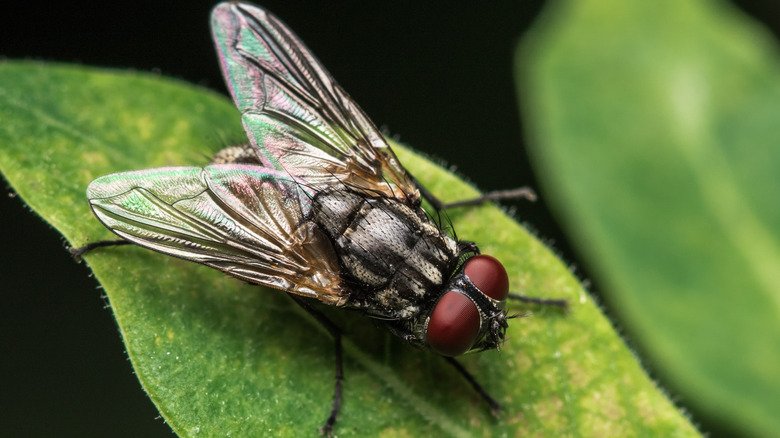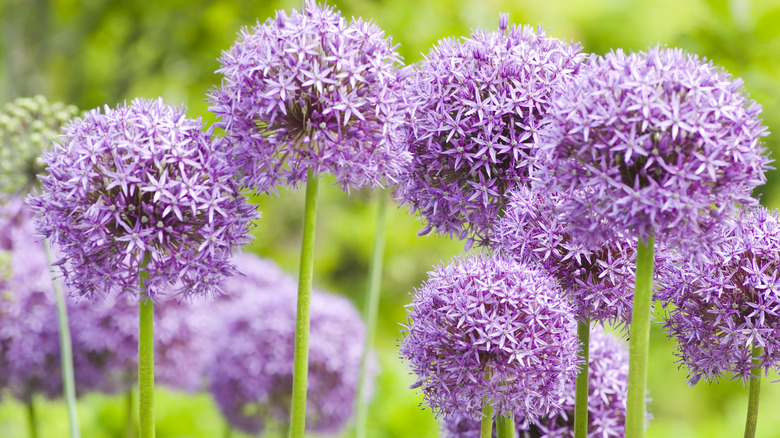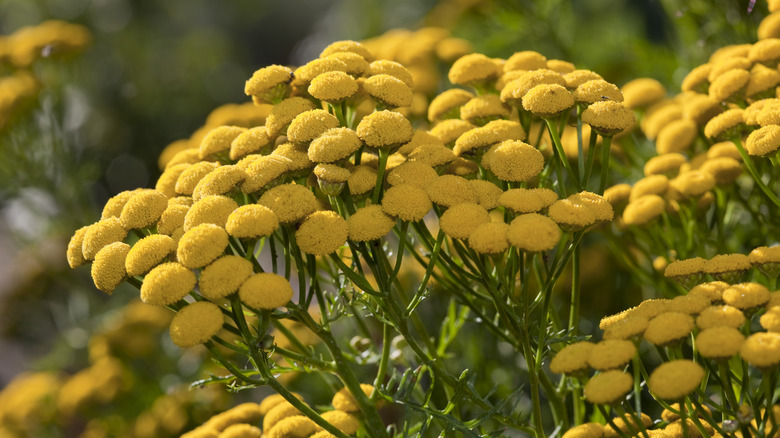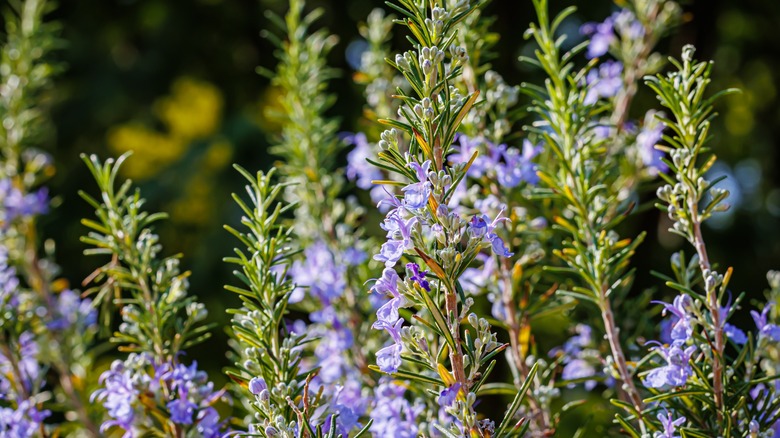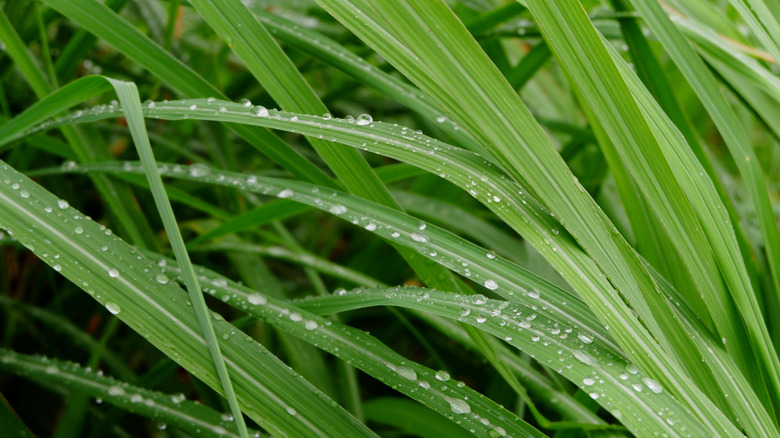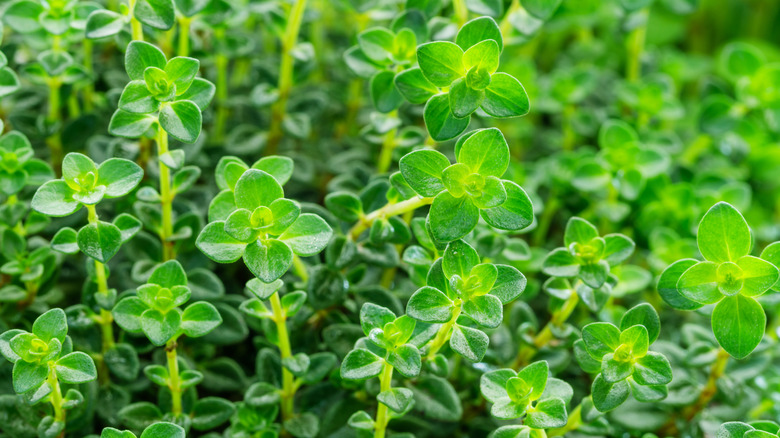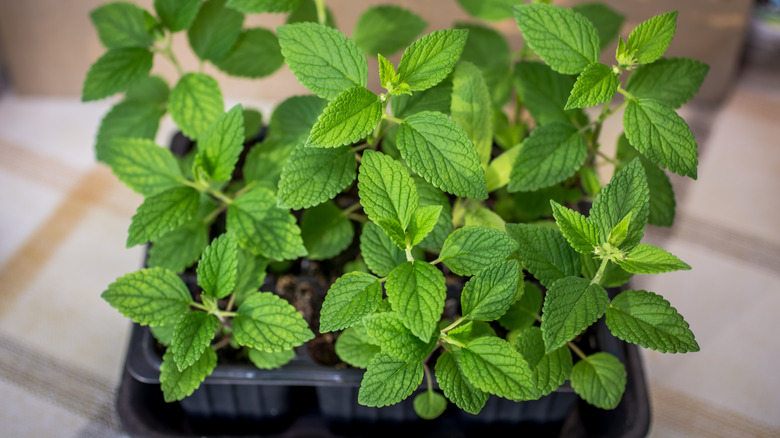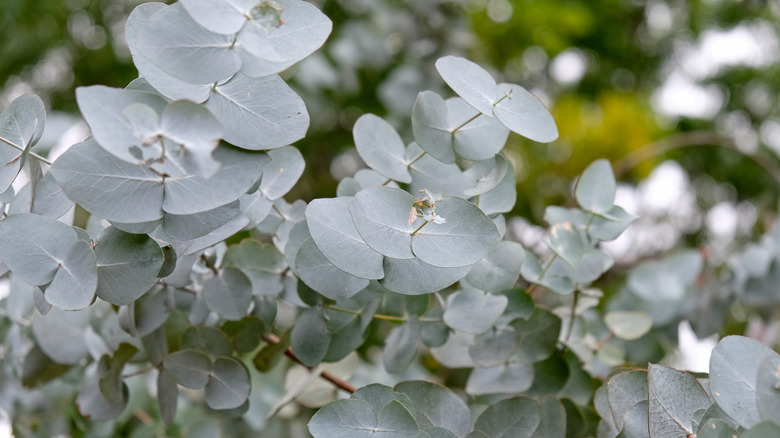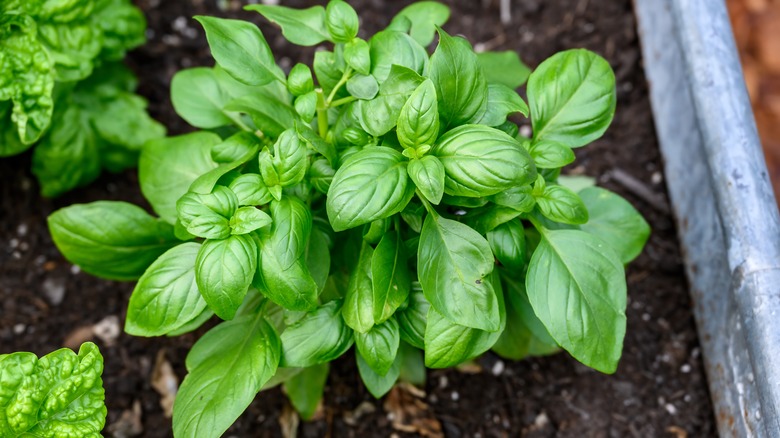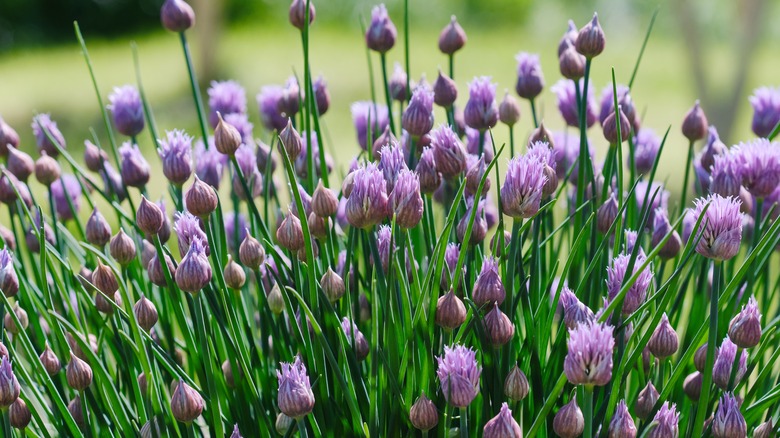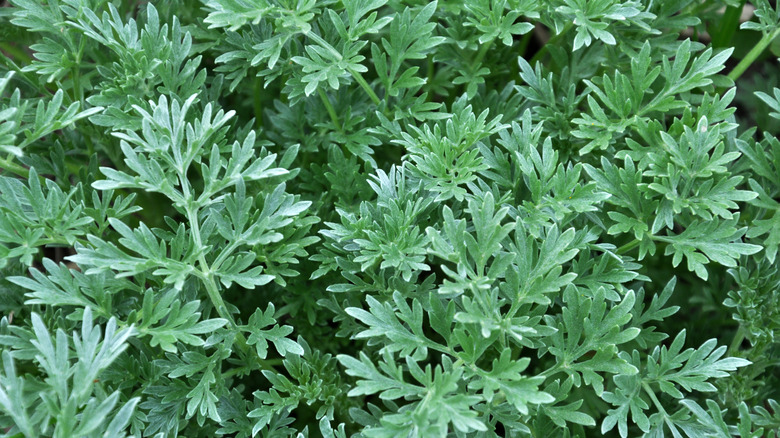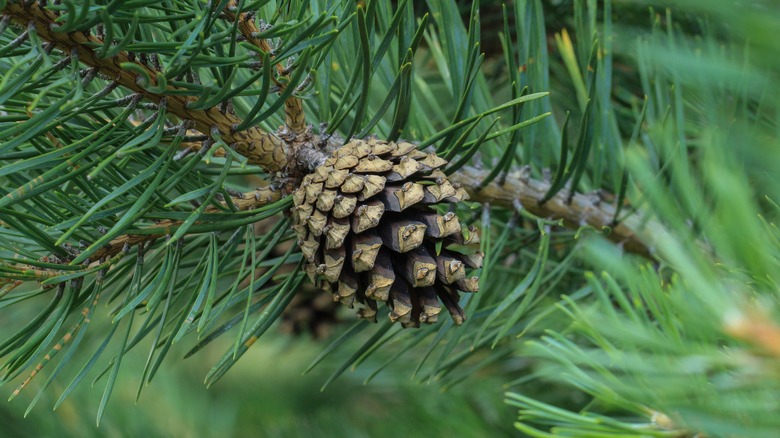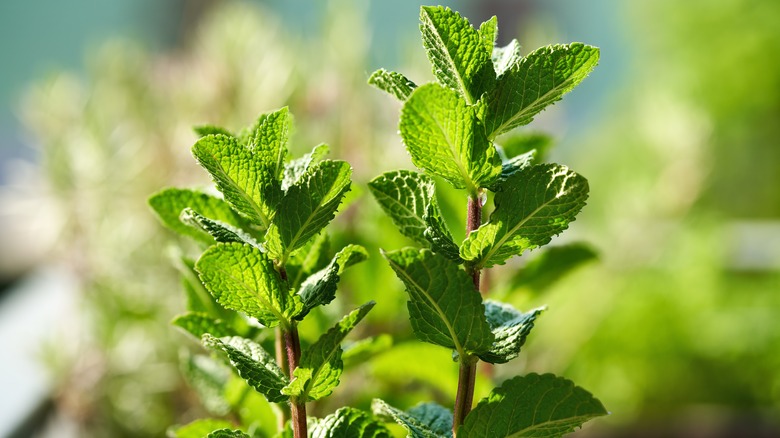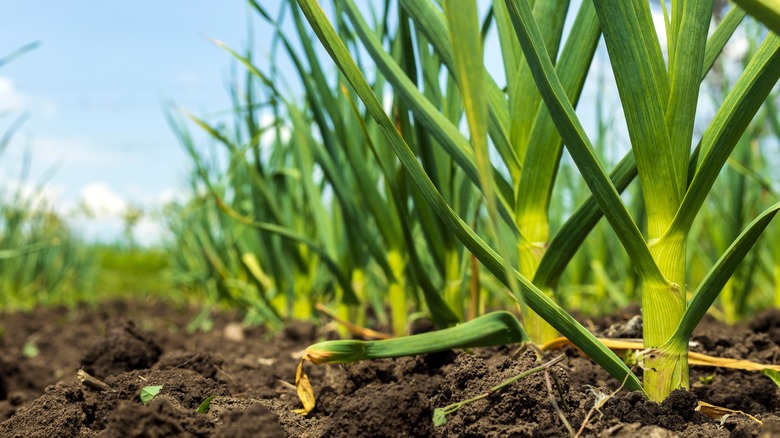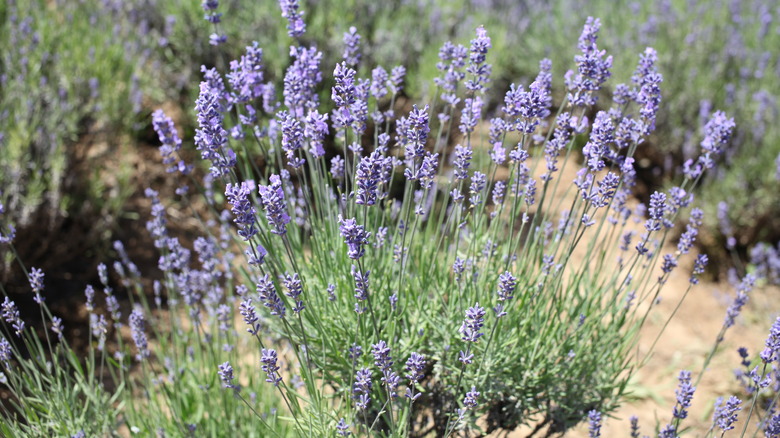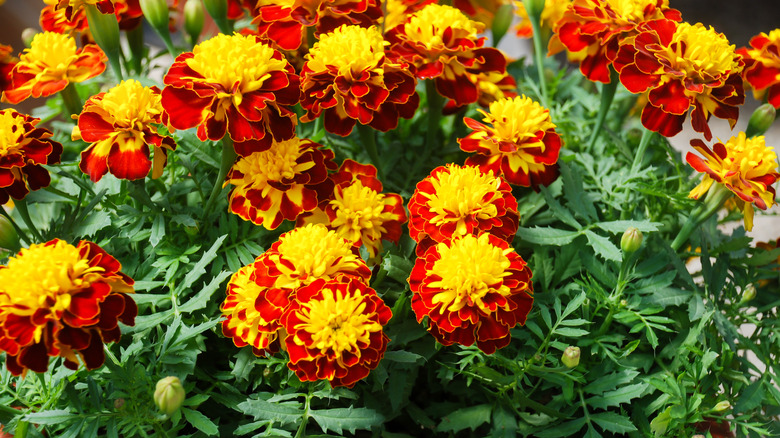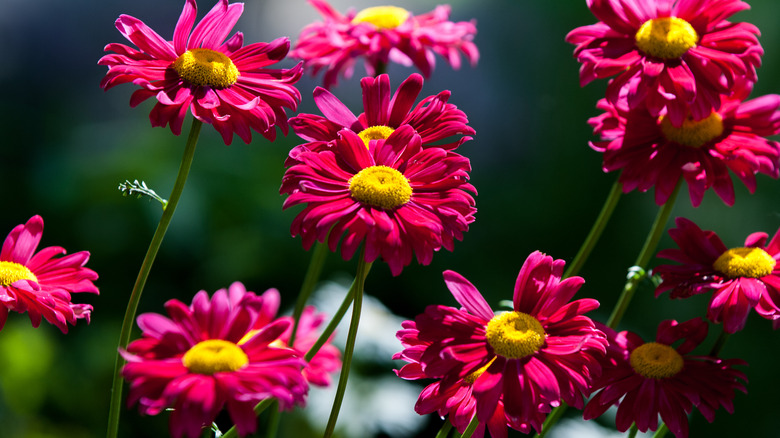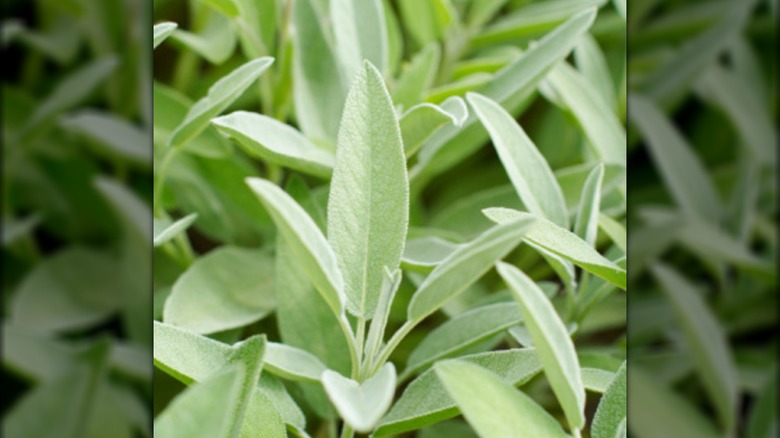Plants That Can Repel Flies From Your Home
We don't have to tell you flies are annoying. Too many of them can ruin a summer day, and even just one persistent fly is enough to drive anyone mad. Though there are many ways to naturally deal with flies once they invade your home, oftentimes it's more effective to prevent them in your yard first. Thankfully, this method involves no toxic sprays, just be prepared to get your hands dirty in the garden. Done right, you'll also increase your home's curb appeal with your new trees, flowers, and herbs.
In this collection of fly-repelling plants, we found a variety of edible and ornamental plants that will serve almost any kind of garden you're looking to grow. Nearly all of them contain essential oils that mask the scent of more appealing things around your home and yard, so your space becomes the place for flies to avoid. As we make our way into the later part of the summer, you'll want to think about planting one or more of these fragrant plants outside and inside your home.
1. Ornamental onion
Ornamental onion (Allium caeruleum) is a tall and unique-looking plant related to garlic, chives, and onions. It's widely adaptable to a range of soil types, and for this, it is considered easy to grow. Consider planting the purple flower in your garden to attract pollinators with its blooms, yet deter pesky flies who are repulsed by the scent of its stems, leaves, and blossoms.
Bloom Season: Summer
USDA Growing Zone: 2 to 10
Growing Conditions: Full sun to partial shade
Soil Type: Rich and well-draining
Size: 14 to 16 inches tall
2. Tansy
A weedy perennial from the daisy family, tansy (Tanacetum vulgare), is a fast-growing and self-seeding flower that successfully wards off a variety of pests, including flies. It features button-like yellow flowers and aromatic serrated leaves. Though the plant enjoys being grown in moist and humusy soil, it would be in a gardener's best interest to keep tansy in drier soil to keep it from spreading too quickly.
Bloom Season: Summer to fall
USDA Growing Zone: 3 to 8
Growing Conditions: Full sun to partial shade
Soil Type: Moist, humusy, and well-draining
Size: 1 to 3 feet tall and wide
3. Rosemary
Rosemary (Salvia rosmarinus) is an incredible herb that produces an essential oil with some amazing potential uses. These include stimulating hair growth, alleviating pain, reducing stress, and, of course, it can repel some insects. When you plant a small rosemary bush in your yard or keep it in a container indoors, provide it with plenty of sunlight and make sure that its soil is draining properly to see the best growth.
Bloom Season: Spring and summer
USDA Growing Zone: 8 to 10
Growing Conditions: Full sun
Soil Type: Well-draining
Size: 4 to 6 feet tall and wide
4. Lemongrass
Lemongrass (Cymbopogon citratus) is among the most well-known bug-deterrent plants. It's marketed for repelling mosquitoes, however, it's proven to ward off house flies and stable flies as well. What the flying pests don't like is the ornamental grass's essential oils. These oils are present in almost all parts of the plant and they emit an odor that repels the insects and even disguises the smell of sweeter species nearby.
USDA Growing Zone: 10 to 11
Growing Conditions: Full sun
Soil Type: Organically rich and well-draining
Size: 2 to 4 feet tall and 2 to 3 feet wide
5. Lemon thyme
Similarly to lemongrass, lemon thyme (Thymus citriodorus) keeps flies away from your home with its citrusy scent. If lemongrass is too large or not cold-hardy enough for your area, consider trying lemon thyme instead. The species is much better suited to cooler USDA growing zones, and it stays much smaller than the ornamental grass. As a bonus, the thyme species also blooms with pretty pale lilac flowers in the summer.
Bloom Season: Summer
USDA Growing Zone: 5 to 8
Growing Conditions: Full sun
Soil Type: Loose and well-draining
Size: 6 to 12 inches tall
6. Catnip
Catnip plants (Nepeta cataria) may attract felines and a variety of pollinator species, but they certainly aren't enticing to mosquitoes, house flies, or stable flies. A member of the mint family, catnip shares a number of similarities to other Lamiaceae species. This includes its large and aggressive growth habit that typically occurs when it receives plenty of moisture, direct sunlight, and space to thrive.
Bloom Season: Spring to fall
USDA Growing Zone: 3 to 7
Growing Conditions: Full sun to partial shade
Soil Type: Well-draining
Size: 2 to 3 feet tall and wide
7. Eucalyptus
Eucalyptus (Eucalyptus cinerea) is yet another fly-resistant plant that is popular for its essential oil. The fragrance and plant juices from this tree are among the most effective repellents for house flies. Though this species can quickly turn into a very tall tree when it's provided with the right care, it can also be kept small when it's grown as a houseplant.
Bloom Season: Spring
USDA Growing Zone: 8 to 11
Growing Conditions: Full sun
Soil Type: Well-draining loam or sand
Size: Up to 60 feet
8. Basil
The basil plant (Ocimum basilium) is frequently recommended as a companion plant to vegetables and herbs for its talent in keeping insects away from their edible parts. Yet, even if you don't have a vegetable garden to protect, you can still grow basil simply to keep flies away from your home. The basil plant is simple to grow, and it'll provide you with some additional toppings for your next pizza or pasta night!
Bloom Season: Summer to fall
USDA Growing Zone: 2 to 11
Growing Conditions: Full sun
Soil Type: Rich and well-draining
Size: 2 feet tall and wide
9. Chives
A relative of onions and garlic, chives (Allium schoenoprasum) are a great option for a low-maintenance and natural fly repellent. They rarely grow taller than two feet high and their leaves are fairly ornamental. The thin and grass-like foliage is also sometimes littered with cute purple flowers during warmer months. Grow yours in a small decorated pot on your patio or plant it among other edible plants in an herb garden.
Bloom Season: Spring and summer
USDA Growing Zone: 3 to 9
Growing Conditions: Full sun
Soil Type: Well-draining
Size: 12 to 18 inches tall
10. Wormwood
Wormwood (Artemisia absinthium) is a lesser-known weed that you might recognize as the main flavor of absinthe. In maturity, the plant has some similarities to tansy, including small button-like yellow flowers and many lobed fragrant leaves. This scent comes from the presence of essential oil containing thujone which deters pests. Keep in mind that wormwood is quick to naturalize, even in areas with poor soil and drought.
Bloom Season: Fall and summer
USDA Growing Zone: 3 to 9
Growing Conditions: Full sun to partial shade
Soil Type: Evenly moist and well-draining
Size: 2 to 5 feet tall and wide
11. Pine tree
You might already know that Pine-Sol repels flies. This is true because flies detest the scent of pine oil which was present in the original Pine-Sol formula. While it might be easier to spray down your patio with a pine mist to deter the flies, you could also plant a pine tree in your yard. The scots pine (Pinus sylvestris), lacebark pine (Pinus bungeana), and bristlecone pine (Pinus aristata) are all fine options.
Bloom Season: Spring
USDA Growing Zone: 2 to 7
Growing Conditions: Full sun
Soil Type: Well-draining
Size: 30 to 60 feet tall and wide
12. Peppermint
As we mentioned earlier, mint plants are well-known for their power to rid your space of pests. Yet, there are countless varieties of mint out there. Specifically, essential oil from the peppermint plant (Mentha piperita) is proven to deter house flies even more effectively than eucalyptus and lemongrass. Still, many of the most odorous mints will keep the flies away including spearmint and pennyroyal.
Bloom Season: Summer
USDA Growing Zone: 5 to 9
Growing Conditions: Full sun to partial shade
Soil Type: Rich and moist
Size: 1 to 2 feet tall and wide
13. Garlic
The very popular garlic plant (Allium sativum) isn't only good for making a delicious meal. It's also a proficient bug deterrent in the garden. Its roots, stem, and foliage all contain oils with sulfuric acid that create the bulb's pungent scent. Even we humans find it bitter when it isn't cooked, and insects such as flies feel the same way so they steer clear.
Bloom Season: Spring
USDA Growing Zone: 7 to 10
Growing Conditions: Full sun
Soil Type: Organic and well-draining
Size: Up to 3 feet tall
14. Lavender
Lavender (Lavandula angustifolia) is a tough plant that can withstand drought, poor soil, and polluted urban conditions. Its best feature is undoubtedly its purple terminal flowers which have a recognizable and relaxing fragrance. Use the dried petals in potpourris or homemade soaps, but don't forget to recognize their insect-fighting properties.
Bloom Season: Summer
USDA Growing Zone: 5 to 8
Growing Conditions: Full sun
Soil Type: Light, sandy, and well-draining
Size: 3 feet tall and 4 feet wide
15. French marigolds
French marigold flowers (Tagetes patula) might be worth growing in a window or garden bed that you're trying to keep flies away from. Though there is little scientific proof of marigolds' abilities to scare off pests, lots of gardeners are still loyal to the orange flowers. To grow them properly, you'll need to plant your annual French marigolds in a consistently sunny area with well-draining soil.
Bloom Season: Spring to fall
USDA Growing Zone: 2 to 11
Growing Conditions: Full sun to partial shade
Soil Type: Well-draining
Size: 6 to 12 inches tall
16. Pyrethrum
Pyrethrum (Tanacetum coccineum) is a flower species, closely related to chrysanthemums and tansy, that is named for the natural insecticide present in its blooms. If you live in a cool enough climate to grow the white to red colored flowers, they are prettier and easier to maintain as an alternative to the weedy tansy plant.
Bloom Season: Summer
USDA Growing Zone: 3 to 7
Growing Conditions: Full sun to partial shade
Soil Type: Well-draining
Size: 1 to 3 feet tall
17. Sage
Sage (Salvia officinalis), like lavender and several other species in this collection, is a member of the Lamiaceae family. Though it smells nothing like mint, the herb does have some of the same needs and habits. Grow this somewhat tall and bushy plant in full sun and never let its soil become too wet if you want to benefit from its pest-repelling abilities.
Bloom Season: Summer
USDA Growing Zone: 4 to 10
Growing Conditions: Full sun
Soil Type: Well-draining
Size: Up to 30 inches tall and 24 inches wide
